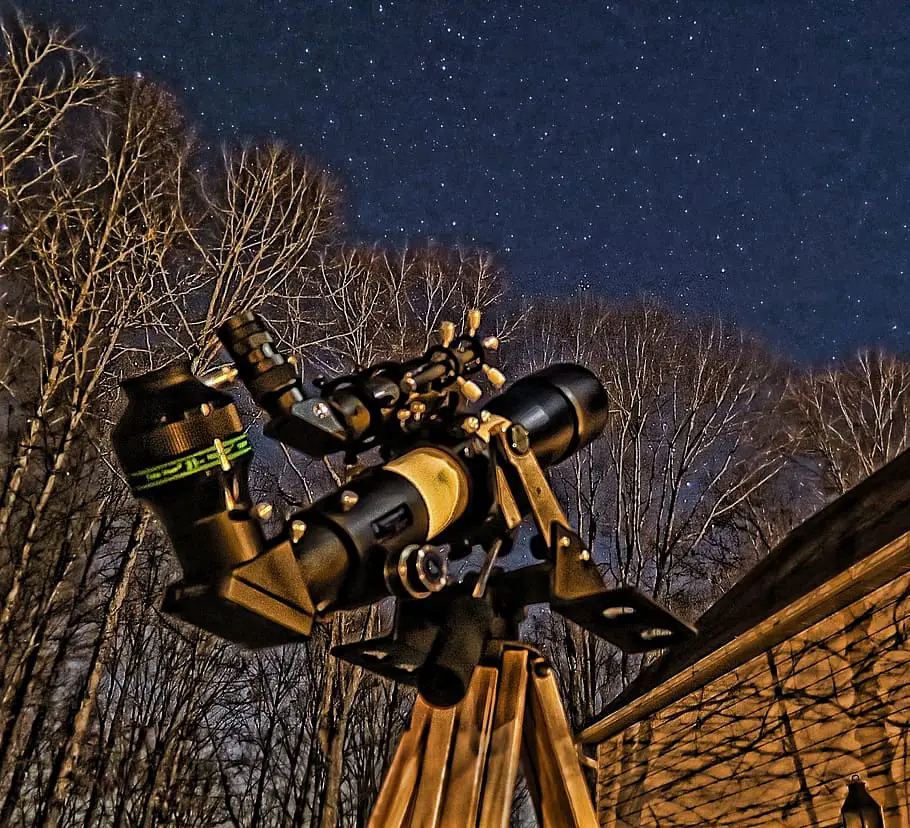Astrophotography is a fascinating sub-field of photography that enables amateurs to take stunning pictures of heavenly bodies including stars, planets, galaxies, and nebulae. This fascinating sub-field of photography is gaining popularity among amateur photographers. However, in order to capture the wonders of the universe with accuracy and precision, this specialist field necessitates the use of particular pieces of equipment. In this piece, we will investigate the basic tools required for astrophotography and analyze the role that each component has in the production of breathtaking photographs of astronomical subjects.
Camera
A camera that is able to capture photographs with a high resolution even when the light levels are low is the single most important piece of equipment for astrophotography. Even though there are cameras that are specifically designed for astronomy, many photographers start their adventure into astrophotography with a digital single-lens reflex (DSLR) or mirrorless camera. These cameras have options for manual control, allow for interchangeable lenses, and have bigger sensors that perform exceptionally well in low-light conditions.
Lens
Selecting the appropriate lens is absolutely necessary in order to capture the night sky. Wide-angle lenses that have low f-numbers, such as 14-24mm f/2.8 or 24-70mm f/2.8, are common options because they capture a large field of view and let more light to reach the camera’s sensor. These lenses are quite popular. In addition, telephoto lenses such as 70-200mm f/2.8 or 100-400mm f/4.5-5.6 are excellent choices for photographing the moon, planets, and other deep-sky objects with a high level of detail.
Tripod
A steady tripod is required in order to take photographs with extended exposure times while minimizing the effects of camera shake. You should look for a tripod that is not only stable but also lightweight and can be adjusted to a variety of heights. You will be able to take photographs of the night sky that are crisp and well-defined if you use a sturdy tripod since it will provide you the required steadiness for longer exposures.
Mount
An astronomical camera absolutely need a mount or tracking system in order to function properly, particularly when attempting to picture deep-sky objects. Equatorial mounts, such as German equatorial mounts (GEM) or fork mounts, are constructed to account for the rotation of the Earth, which makes it possible to follow celestial objects without any interruptions. These mounts allow for longer exposures, which ultimately results in photographs that are sharper and more detailed.
Remote Shutter Release
When taking photos with long exposures, using a remote shutter release or an intervalometer to control when the shutter is opened and closed can assist prevent camera shake. Because this gadget enables you to trigger the camera without actually touching it, the chance of introducing vibrations that can cause your photographs to become blurry is significantly reduced.
Power Supply
Power Supply Because astrophotography sessions can go on for very long stretches of time, it is extremely important to have a reliable power supply. If you want to keep your camera, mount, and other equipment powered up throughout the night, you should either bring replacement batteries with you or use an external power source. Because exposure to low temperatures can shorten the lifespan of batteries, it is advisable to insulate them with an appropriate container or wrap in order to preserve their performance.
Light Pollution Filters
In regions with considerable levels of light pollution, the use of light pollution filters can aid improve the visibility of celestial objects as well as the color rendition of such objects. These filters lessen the effect of artificial light sources while simultaneously heightening the contrast between the astronomical subjects and the night sky, which ultimately results in photographs that are more arresting.
Accessories
A strong carrying case for your equipment, a red LED headlight for preserving night vision, a portable dew heater to prevent condensation on the camera lens, and a laptop or tablet for remote camera control and image review are some of the other helpful gear for astrophotography.
Astrophotography presents a unique opportunity to investigate the wondrousness of the cosmos and to record that investigation via the medium of awe-inspiring photographs. Even while the aforementioned pieces of equipment make up the backbone of astrophotography, it is imperative to keep in mind that education and experience are equally as crucial. Experimenting with a variety of different camera settings, photographic methods, and subject matter will help you hone your photography skills and produce magnificent photographs that reveal the marvels of the night sky. As a result, you should prepare your equipment, go out into the night, and engage in the practice of astrophotography in order to discover the hidden mysteries of the universe.
![]()
